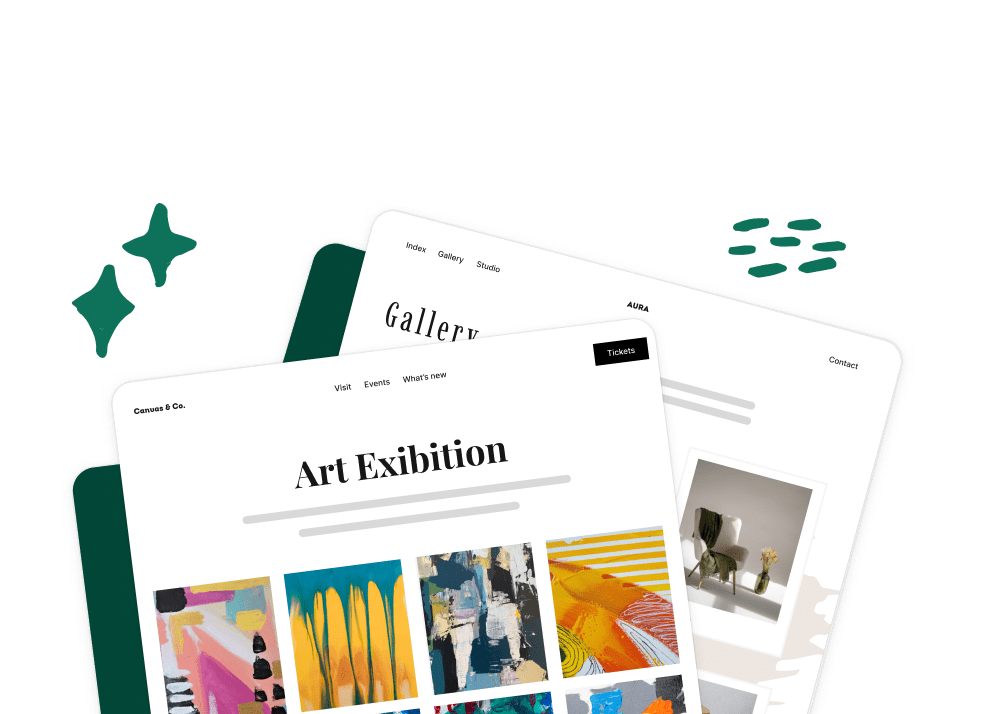The brush tool is one of Photoshop’s most versatile and important tools. This tool allows you to paint freehand, add color, refine layer masks and make dozens of other changes to your images. So, having a thorough understanding of how the Brush Tool operates is key to becoming a great photo editor.
Many of the same mechanics that affect the Brush Tool also affect other tools in Photoshop’s toolbox. Do you want to improve your understanding of the Brush Tool? This thorough guide to the Brush Tool in Photoshop can help!
Here, we’ll cover some of the biggest concepts that affect the Brush Tool, including:
- Brush size and tip type
- Brush dynamics, including hardness
- Opacity and flow
- Smoothing
- Creating custom brushes
Each of these brush properties has a significant impact on the way your Brush will perform in Photoshop. While Photoshop has come a long way in improving the pre-visualization of these changes, it still helps to understand how to configure these settings on your own. With a clear understanding of these properties, you can configure the best brush for your editing job.
Furthermore, it’s helpful to learn these properties, since they also apply to other tools like the Clone Stamp Tool, Stamp Tool and Dodge and Burn Tool. This class of tools is functionally different from adjustment tools like the Crop Tool or Rotate View Tool, because they directly alter individual pixels on individual layers and result in more direct changes.
Now that you see how important the Brush Tool and other tools like it are to Photoshop’s interface, let’s dive in! We’ll learn how to use the Photoshop Brush Tool, how to configure it for your editing projects and more. But first, make sure you’ve downloaded the latest version of Photoshop from Adobe for only $9.99/month.
What Is the Photoshop Brush Tool?
The Photoshop Brush Tool helps you create stunning photo edits by helping you paint directly on the Photoshop canvas. While you can accomplish more intricate painting with this tool and a graphic tablet, you can also manipulate the Brush Tool using your mouse or trackpad.
A click of your mouse or trackpad effectively presses the digital brush onto the canvas, creating either a single dot or brush stroke. Clicking and dragging the cursor creates long strokes, or scattered dots if you choose to paint with a scattered brush.

The Brush Tool affects pixel-level changes in your Photoshop document, which means you directly edit the pixels under the brush area when you use the tool.
You’ll find the Brush Tool in Photoshop’s left-hand toolbar, marked with a brush icon, or by pressing keyboard shortcut B. Once you’ve activated the Brush Tool, you can use it to paint directly on an image, on a layer or on a layer mask.
Also available in the same toolbar under a drop-down menu, is the Pencil Tool. While this shares some similarities with the Brush Tool, for the purpose of this article, we’ll be focused solely on the Brush.

Of course, you can set the color of your paintbrush in Photoshop in a couple of different ways. In a previous guide to the Eyedropper Tool, we discussed how you can use Photoshop’s Eyedropper to select a color from your canvas, which you can then use to paint.
Additionally, you can click on your Color Palette, marked by a pair of overlapping boxes at the bottom of the tool panel. From the Color Picker that appears, you can select a color from the gradient or input RGB, CMYK, LAB, HSB or Hex Codes to create a specific color. Within the Color Picker, you can toggle to show only web safe colors. These colors work with web browsers color standards, so this is important if you plan to post your image online.

The brush tool will use the “foreground” color to paint on the canvas. But, you can switch to the “background” color whenever you aren’t actively using a tool. To switch between foreground and background color swatches, either click the small arrow near the Color Palette, or use the keyboard shortcut X.
To return to the default set of palette colors — pure black and pure white —use the shortcut key D.
Making use of your dual brush color options is one of the easiest ways to improve your workflow with the Brush Tool. Many users need to switch between colors often while painting. That’s why it’s important to have easy access to multiple colors at once.
Layer masks are a great example of when Photoshop’s dual color palette comes in handy, as toggling between white and black paint allows you to easily add and subtract from the mask.
Best Uses for the Photoshop Brush Tool
You should use the Bush Tool any time you need to directly change pixels in your image or canvas to a single color. If you need to make a change to an underlying pattern or gradient, a tool like the Clone Stamp, Healing Brush, or Gradient will be a better option. The strength of the brush tool lies in its ability to directly create a new area of single-colored pixels.
All of the Brush Tool’s potential adjustments are all refinements on this concept. That is, you can adjust the Opacity or Flow of the brush, which alters its strength, but not its functionality. Other changes, like adjustments to the Shape, Diameter and Hardness, are all just changes to the Brush Tool that affect how its paint appears on the area on which you use it.
For example, when you adjust your brush’s Hardness, you change how strong or soft its edges appear when you paint. A stroke made with a brush at 100% Hardness will feature clean, crisp lines and edges. A stroke made with a soft brush set to only 10% Hardness will have blurred edges. See the difference between Hard and Soft brushes below:

You can streamline your workflow so that you don’t have to customize your brush’s features each time you use it. You can create your own shortcut by saving your preferred brush settings, including brush shape, to a custom brush. Custom brushes are a fast way to recreate complicated brush effects in multiple images.
Layer Masks
The Brush Tool is designed for digital painting, whether you want to create a painting from scratch or use paint to enhance an existing image. If you’re working with a photograph, you can use the Brush Tool to fine tune layer and adjustment masks, or limit their effects to only certain portions of the photo. When you use the Brush Tool on a layer mask, you change the visibility of the layer the mask is attached to.
For example, you may have an adjustment layer that increases the saturation or brightness of your image layer. If you want that saturation or brightness adjustment to affect only a certain portion of the image layer, you can add a layer mask to the adjustment, fill it with black, then use a brush with white to “paint” the adjustment onto certain areas.
When working with a layer mask, some of the most important brush properties to consider include Brush Size, Hardness and Opacity. Each of these can have a different impact on how the brush applies the mask with each brush stroke. While we’ll further discuss how to adjust these settings later, it’s important to understand how these options can change the tool’s effect.
Brush Adjustment Options
Adjustments to the brush’s size have an obvious impact on your total image. A bigger brush allows you to mask in or mask out large areas more quickly. A small brush allows you to make small changes more easily. And, when combined with a high zoom level, a small brush will help you tweak fine areas with precision.
The Hardness of Photoshop’s Brush Tool refers to how feathered the brush’s edges appear when you make a stroke. In adjusting the brush’s Hardness, you can create a brush without sharp edges, which can make your mask look more gradual.
Finally, you can also adjust your brush’s Opacity to reduce the overall effect of the brush. A low opacity will require you to brush over the same area multiple times to get the same effect as a single stroke at higher opacity.
Special effects brushes can allow you to paint objects into your photos. For example, you could create additional stars in a nights sky or make a plain, flat area and remove image elements. You could even use the Brush Tool to paint over text to replace it with your own. In this way, the Brush can function as a simpler alternative to the Clone Stamp Tool.
Dodge & Burn Effect
While Photoshop offers a Dodge and Burn Tool separate from the Brush Tool, you can create same effect using the Brush Tool. Dodging and burning is the process of selectively darkening and brightening an image, typically to alter contrast or direct the viewer’s attention in a certain direction.
It’s easy to overdo a dodging and burning effect, resulting in a very artificial looking image. But, making good use of a variety of brush setups can reduce the chance of this happening. For more on how to Dodge and Burn, check out our guide to the technique here!
How to Use the Photoshop Brush Tool
We’ve already discussed how to activate the Brush Tool, either by selecting the brush from the toolbox or by using the shortcut B. But, after you’ve activated the tool, you still need to know how to configure it for your project!
Configuring your brush is important because the brush’s default settings won’t work for every image edit. By default, the brush size is relatively small, with a clearly defined point. While this works great for painting directly on the canvas, you’ll need to change these settings for almost every other use.
You can configure your brushes with a variety of options, set via the Brush Settings panel and Tool Options, or via the right-click shortcut on the canvas when the brush tool is active. The brush’s main settings, including Size, Hardness and Opacity are configurable in multiple places.
You can also hold the ALT key while pressing the right mouse button and moving the mouse. This offers a final, convenient way of adjusting the brush. Because this helpful shortcut doesn’t require you to move the mouse off the canvas, it doesn’t demand attention away from your work.

While using the ALT key shortcut, you can preview the effect of your changes by looking at the tip. A red outline shows how your brush properties shape your brush.
Beyond these basic adjustments, you can configure your brush with a wide array of adjustments to the brush tip shape. For example, you can change the brush tip shape from a simple round brush to others. Photoshop offers splatter tips, angled tips, dots and a variety of other shapes.
Preview your changes in the Brush Settings panel. There, you can also alter other settings and preview your brush’s stroke.

This panel is also one of the best ways to preview custom brushes. Just load your custom brushes via a drop-down in the Tool menu. Then click on the brush drop-down followed by the cog icon. A new drop-down menu will then reveal an option to import brushes.

A simple search for Photoshop brushes will return hundreds of free brushes you can import to your Brushes Library. Sites like Brusheezy are a great place to start.
Don’t be afraid to try a variety of brushes! The files are very small, but they can make a huge impact on how you work with Photoshop’s Brush Tool. Furthermore, you can easily tweak the brushes you import so that they better suit your needs.
While changing the size is the easiest adjustment to make, Photoshop offers a number of other adjustment options. Some of these options are oriented towards digital painting and include things like Brush Pose, Transfer and Texture. These settings all affect either how the brush behaves or how it interacts with the underlying canvas.
Brush Smoothing is probably the most important brush setting after Size, Shape and Opacity. Photoshop CC 2018 brought significant advancements in Brush Smoothing, which made for smoother, cleaner lines. Essentially, a high smoothing setting will delay the speed of your brush stroke. This changes your brush stroke to a “dragged string” effect, analogous to dragging a weight with a string across a surface.
This change can be subtle, but definitely imparts a smoother line to your brush strokes. Try it at a variety of settings to see which works best for your workflow.
Using the Brush Tool with Other Tools
Using the Brush Tool in combination with layer masks and selections has been one of the biggest pros of using Photoshop for many photographers. This three-tool combination allows photographers to make powerful, targeted adjustments. Post-processing is an essential step for most photographers, but preventing the edits from dominating a photo can present a challenge.
The key to retaining a photo’s natural look is learning how to use brushes with layer masks and selections. These tools allow you to make global adjustments, and then target them to a specific area of the photo.
To implement this editing strategy, begin by creating a new layer. Remember, you can copy your image layer if you want to use a filter like Camera RAW!
Inside your new layer, create your adjustment like normal. Don’t worry if you see your adjustment affecting the entire image, since we’ll be limiting the adjustment’s reach later.
That’s one of the best parts of this workflow. By preserving your effect in a layer mask, you can tweak the adjustment’s application at any point in the edit. It’s even better if you work with a smart object or adjustment mask. These objects allow you to adjust the strength of the adjustment as well as the area.
Once you’ve made your global adjustment, it’s time to figure out how you want to localize it to your image. Where do you want to apply your edit?
Suppose you want to apply your edit locally to the photo’s subject. Identify the subject and, using the selection tool of your choice, roughly select the subject. The Quick Selection Tool is a great option for this, but certain subjects may require other tools like the Lasso Tool or Select by Color.
Now, create a layer mask by clicking the mask icon while your subject is still selected. The mask will then contain your active selection so that your selection is visible in the mask. If you actually want the opposite portion of the photo masked in, you can easily invert the mask by selecting the layer mask and using the shortcut Control + I.

Now, make sure you’re working from your layer mask in the Layers panel. Choose the Brush Tool from the left-hand toolbar, and notice that your color palette automatically changes to black and white. Black and white are the only colors you can use to paint on a layer mask.
Black paint on a mask makes that area of the linked layer invisible. Painting over the mask with black at a lowered opacity will instead reduce the visibility of that layer. White paint, on the other hand, reveals the linked layer.
If your subject selection is still active, you won’t be able paint outside of that selected area. That allows you to target your adjustments to only the area selected, so you don’t have to worry about painting outside the lines of your subject. To work on that outside area, either deselect your active selection with Control + D, or invert the selection.
Think of these tools as building up or breaking down adjustments to the selected portion of your photo. To see an advanced application of some of these concepts, check out our guide to colorizing a photo. Colorizing a black and white image requires natural looking brush strokes and masks, so try this tutorial for practice.
As we mentioned earlier, some other tools share the same brush properties. For example, you can also change Healing Brush’s Size, Hardness and Opacity, like the regular Brush Tool. When you soften the Healing Brush, you create a gradual change from existing to new pixels. You’ll find that this is key to creating a natural, seamless edit.
Conclusion
The Brush Tool is a surprisingly complex tool, and it is an essential part of almost every Photoshop user’s toolbox. It’s also one of Photoshop’s most tactile tools, because it requires that users learn how its settings affect the digital environment.
Hopefully, this guide has given you better appreciation for the depth of Photoshop’s Brush Tool, including the changes you can make to it so that it better meets your needs. It’s one of Photoshop’s most fun tools, with virtually endless creative possibilities. Downloading and trying out a variety of brushes will help you inject whimsy into your Photoshop work.
If you liked this guide, check out these other top articles that will help you on your photography and photo editing journey:
Let us know if this guide has helped you better understand the possibilities of one of Photoshop’s seemingly simplest tools! Follow us on Facebook and Twitter so you don’t miss another informative article from Envira Gallery! Or, sign up for our email list.















